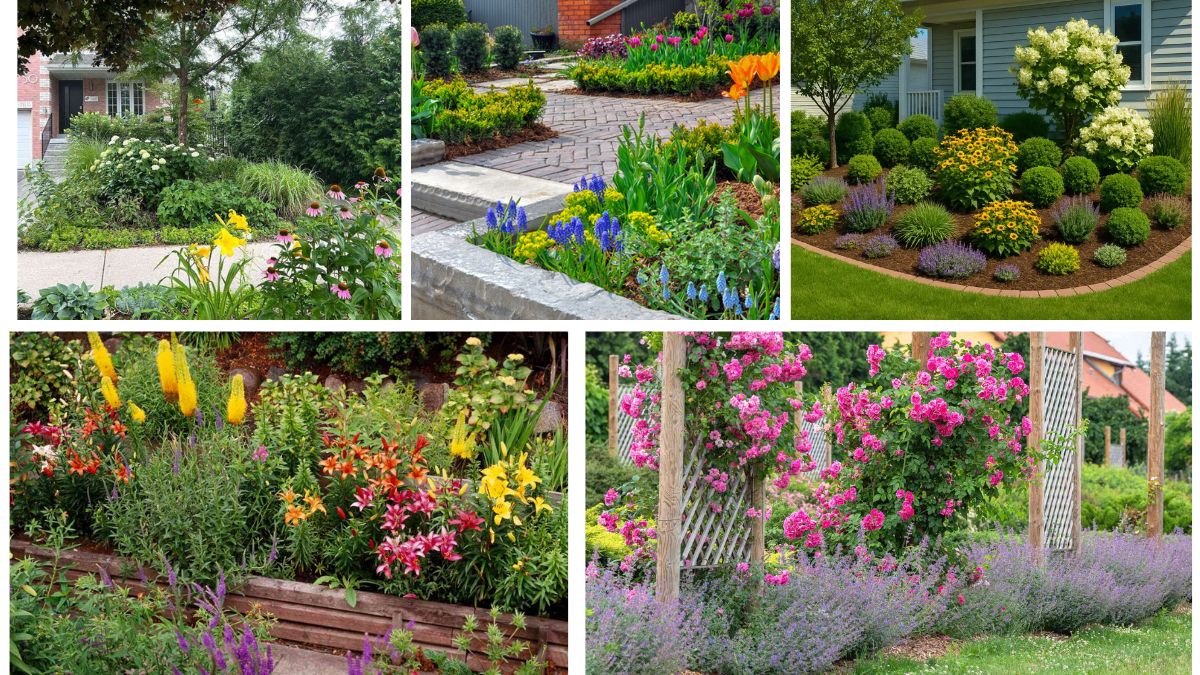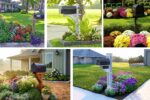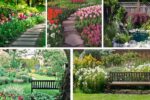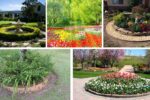First impressions matter—not just in life but in landscaping as well. The front yard is the first thing visitors and passersby notice about your home, and a thoughtfully designed flower bed can instantly transform an ordinary entrance into a welcoming, eye-catching space. The right arrangement of flowers, plants, and decorative elements can bring out the beauty of your home while creating a warm, inviting environment for guests.
In this article, we’ll explore how to design front yard flower beds that wow guests instantly—from choosing the right flowers and layouts to adding color, structure, and seasonal appeal.
Why Front Yard Flower Beds Matter
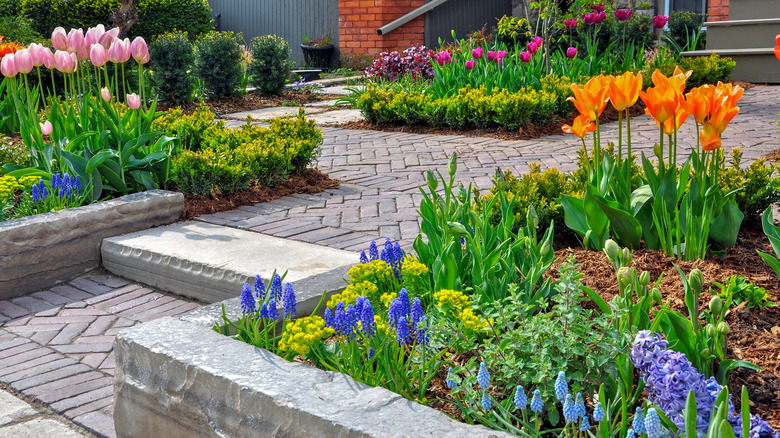
Front yard flower beds are more than just garden spaces. They serve multiple purposes:
- Curb Appeal Boost – Flower beds instantly elevate the appearance of your home, making it look fresh, vibrant, and well-maintained.
- Personal Expression – Through flower choices, colors, and arrangements, you can showcase your personal style.
- Welcoming Atmosphere – A burst of blooms near the entrance creates a cheerful first impression that puts guests at ease.
- Property Value – According to landscaping studies, homes with attractive gardens tend to have higher property values and quicker sales.
Whether you prefer a formal, symmetrical look or a wild, cottage-style garden, the right flower bed can become the defining feature of your front yard.
Designing Stunning Front Yard Flower Beds
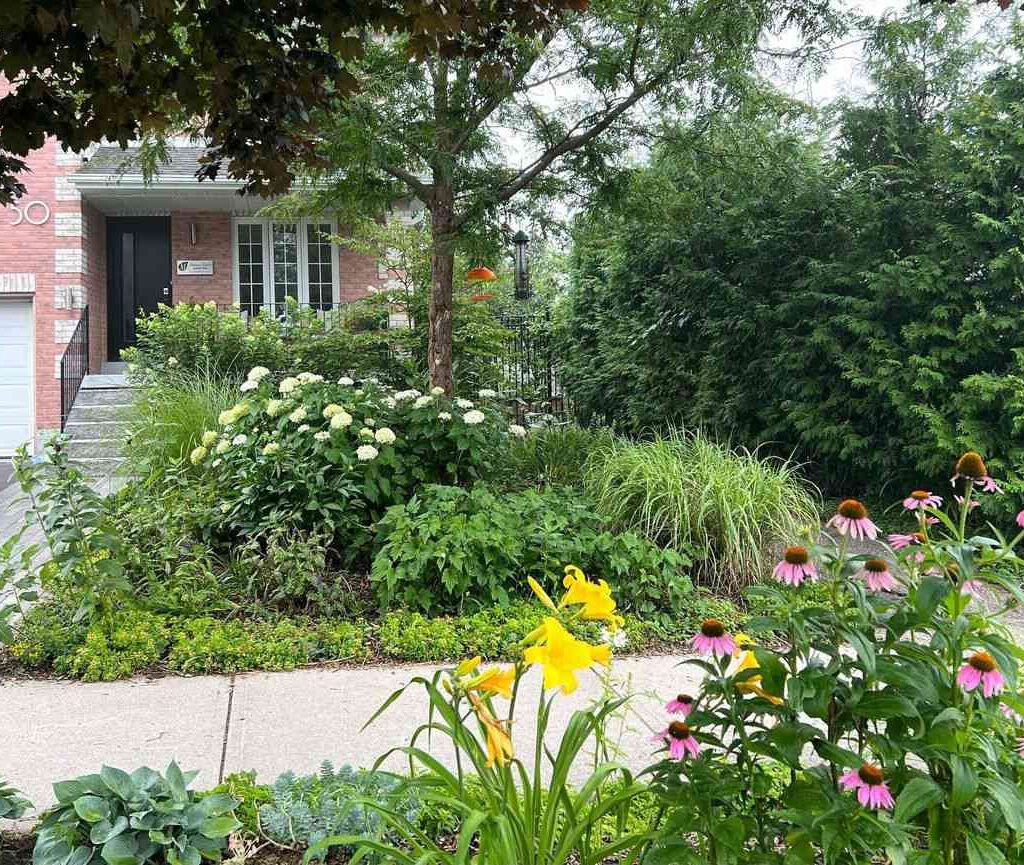
1. Choose the Right Location
Placement is everything. Flower beds are most effective when positioned where they naturally draw attention. Popular spots include:
- Along the pathway leading to your front door.
- At the base of trees to soften large trunks with color.
- Beneath windows for a “framed” floral effect.
- At the front corners of the house to balance architecture with greenery.
2. Decide on a Shape and Layout
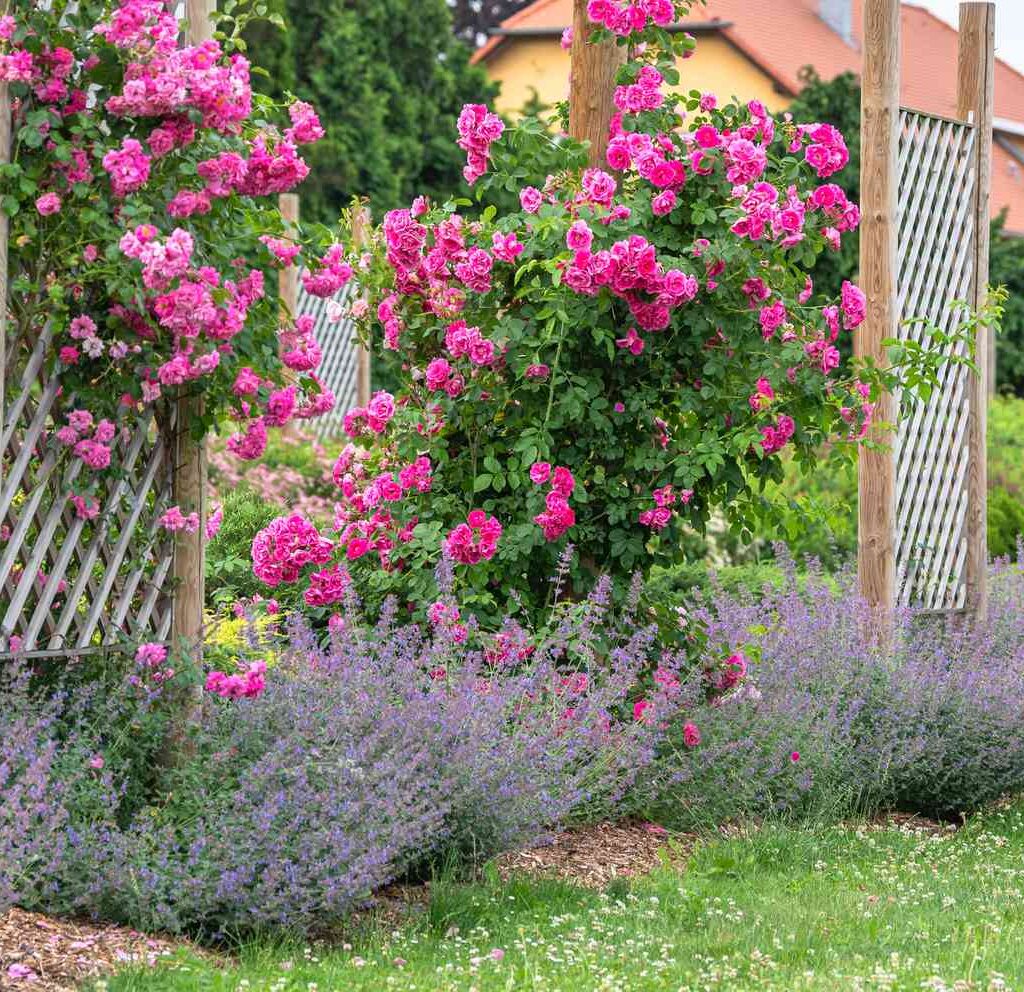
The shape of your flower bed sets the tone of the design.
- Circular beds make perfect focal points for the middle of a lawn.
- Curved beds soften sharp lines and create flow.
- Straight borders along driveways or fences give a neat, modern look.
- Tiered beds add depth and dimension.
For maximum impact, align the shape with your home’s architecture—curves for cottages, straight lines for contemporary homes, and layered beds for traditional houses.
3. Mix Heights for Visual Interest
A flower bed should never be flat. By mixing plants of different heights, you create depth and intrigue.
- Tall plants (hollyhocks, delphiniums, ornamental grasses) go at the back.
- Medium plants (roses, daylilies, lavender) create the middle layer.
- Low-growing plants (petunias, marigolds, alyssum) form the border.
This layered effect ensures your bed looks full and lush rather than sparse.
4. Play with Color Schemes
Colors are what guests will notice instantly. Choose a palette that matches your home’s exterior.
- Warm tones (reds, oranges, yellows) create an energetic, welcoming feel.
- Cool tones (blues, purples, whites) bring elegance and calm.
- Monochromatic schemes (different shades of one color) look modern and refined.
- Contrasting schemes (purple and yellow, red and white) create bold visual drama.
For year-round appeal, plant both annuals for instant color and perennials for lasting structure.
5. Add Structural Elements
Flowers alone may not be enough to create the “wow factor.” Adding structural and decorative elements enhances the design.
- Edging stones or bricks define the flower bed neatly.
- Mulch retains moisture and gives a polished finish.
- Garden statues, birdbaths, or lanterns make beds visually striking.
- Trellises or arches with climbing plants like clematis or roses add height and charm.
6. Ensure Seasonal Interest
A flower bed that only blooms in spring won’t impress year-round. Choose a mix of plants that flower at different times:
- Spring: Tulips, daffodils, hyacinths.
- Summer: Roses, petunias, zinnias.
- Fall: Mums, asters, ornamental kale.
- Winter interest: Evergreen shrubs, holly, or red twig dogwood.
This way, your flower beds remain lively in every season.
Examples of Stunning Front Yard Flower Beds
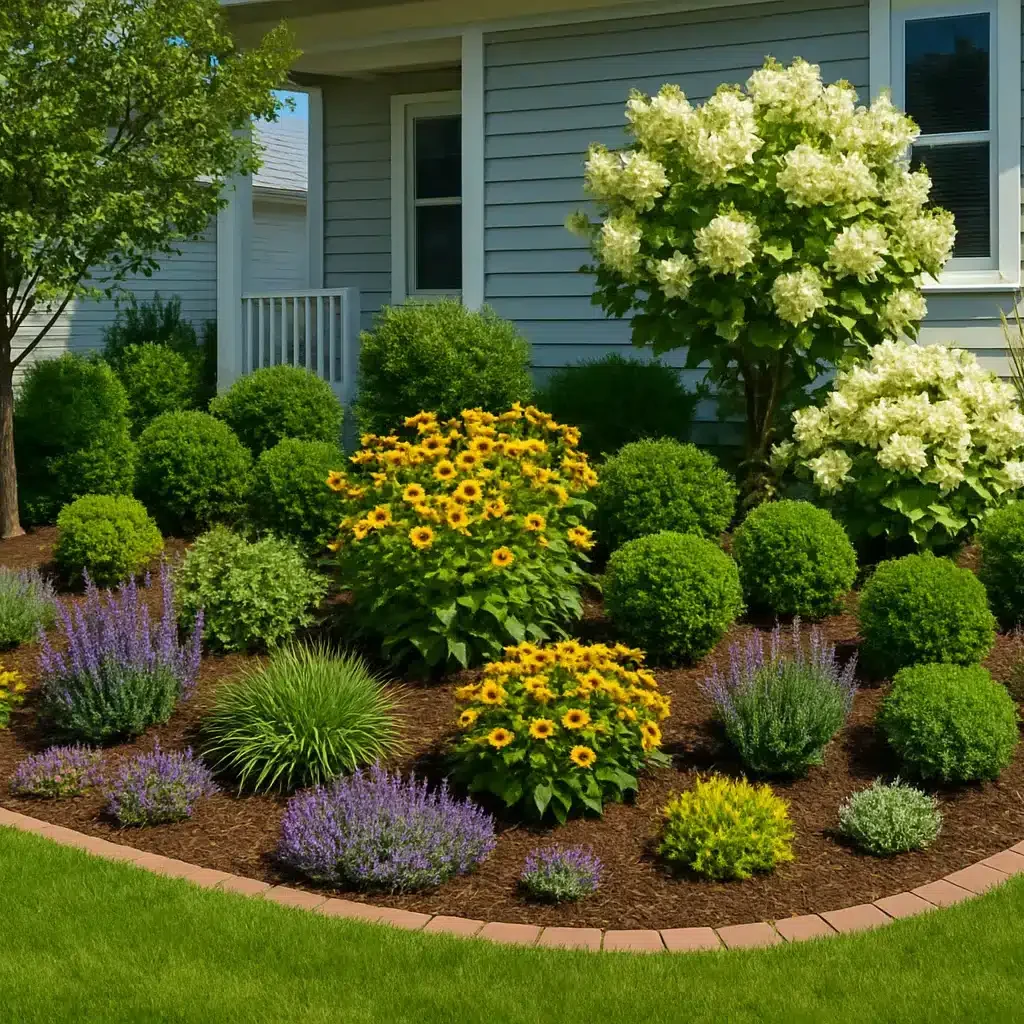
1. Classic Cottage-Style Bed
Packed with roses, lavender, daisies, and delphiniums, a cottage-style bed feels whimsical and welcoming. The mix of heights and colors makes it look like nature arranged it.
2. Modern Minimalist Bed
If you prefer sleekness, stick to fewer plant types with bold repetition. For example, rows of white hydrangeas framed by boxwood edging make a modern yet elegant statement.
3. Tree Base Flower Bed
Circular flower beds around the base of large trees soften the trunk while adding a burst of color. Hostas, impatiens, or begonias work beautifully here.
4. Pathway-Lined Beds
Nothing wows guests like walking up a flower-lined pathway. Low-growing blooms like marigolds, alyssum, or pansies guide the way beautifully.
5. Corner Statement Bed
Placing a large circular or triangular flower bed at the corner of your front yard anchors the space and creates a bold focal point visible from the street.
Tips for Maintaining Beautiful Front Yard Beds
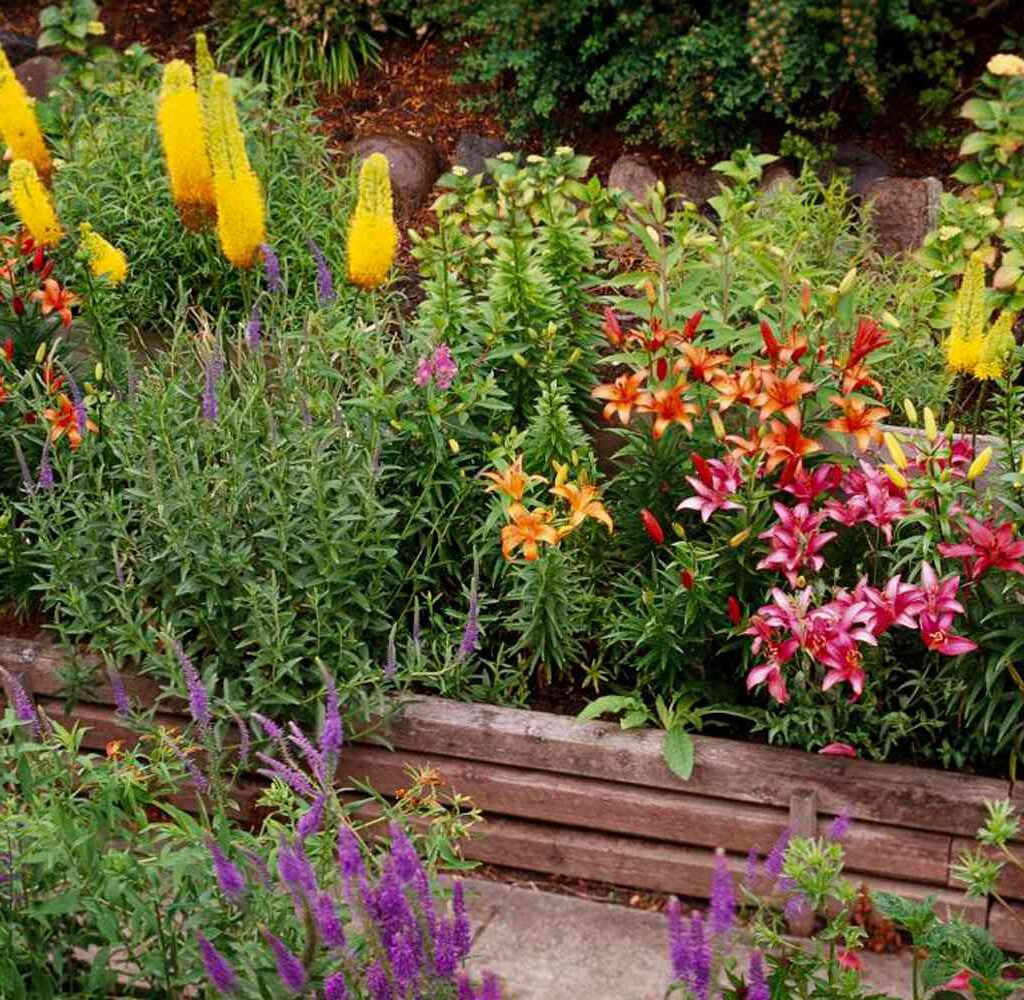
- Water Smartly: Install drip irrigation or water early morning to reduce evaporation.
- Fertilize Regularly: Use slow-release fertilizer to keep plants healthy.
- Deadhead Blooms: Removing spent flowers encourages continuous blooming.
- Mulch Annually: Refresh mulch to suppress weeds and lock in soil moisture.
- Prune and Trim: Keep plants neat and prevent overgrowth that hides other flowers.
Final Thoughts
Front yard flower beds are one of the simplest yet most powerful ways to wow your guests instantly. With the right combination of location, design, color, and seasonal appeal, you can transform your home’s exterior into a breathtaking display that reflects your personality and style.
Whether you love bold and colorful, soft and elegant, or minimal and modern designs, a well-planned flower bed creates not only beauty but also a warm, inviting welcome. Remember: your garden is the first chapter of your home’s story—make it a vibrant and unforgettable one.
